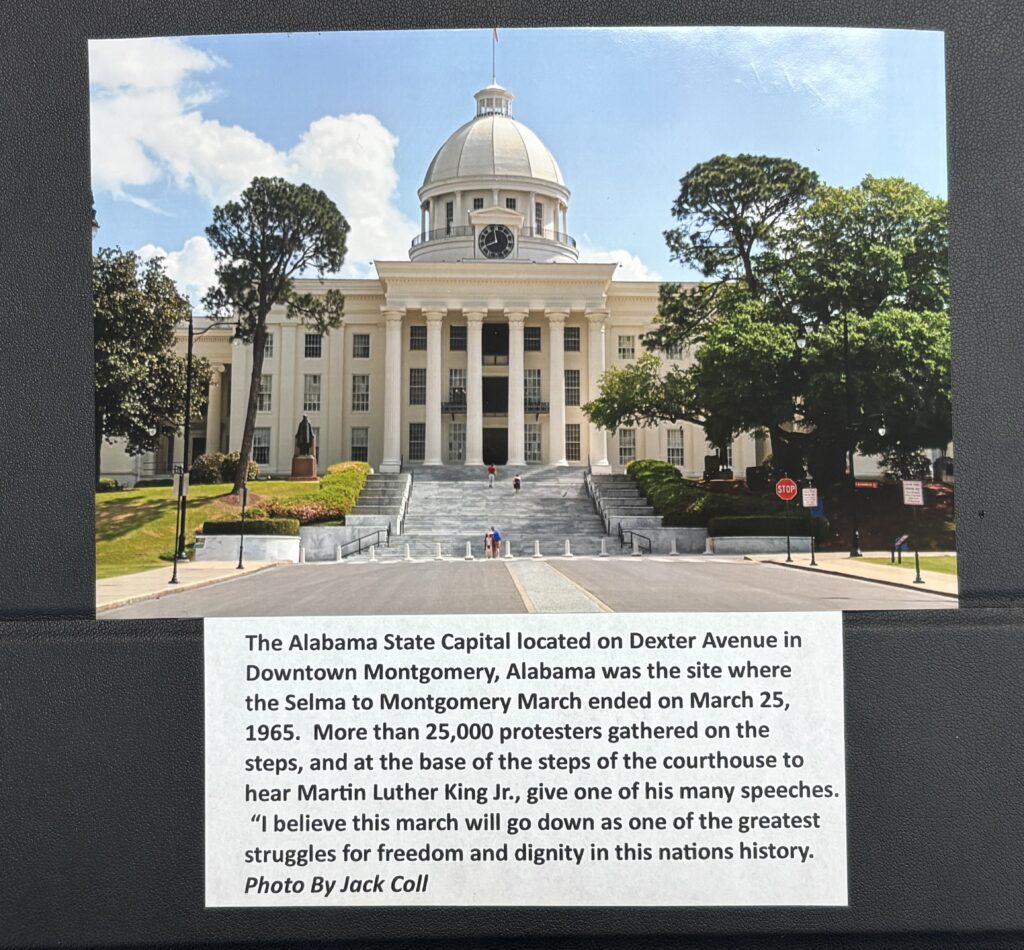
Conshy Adult Prom – Masquerade February 22nd – Details Here
February 3, 2025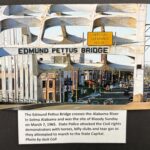
Black History Month – Bob Dylan, Civil Rights and Me by Jack Coll (Part Two)
February 28, 2025Black History Month – Bob Dylan, Civil Rights and Me (Montgomery, Alabama Road Trip)
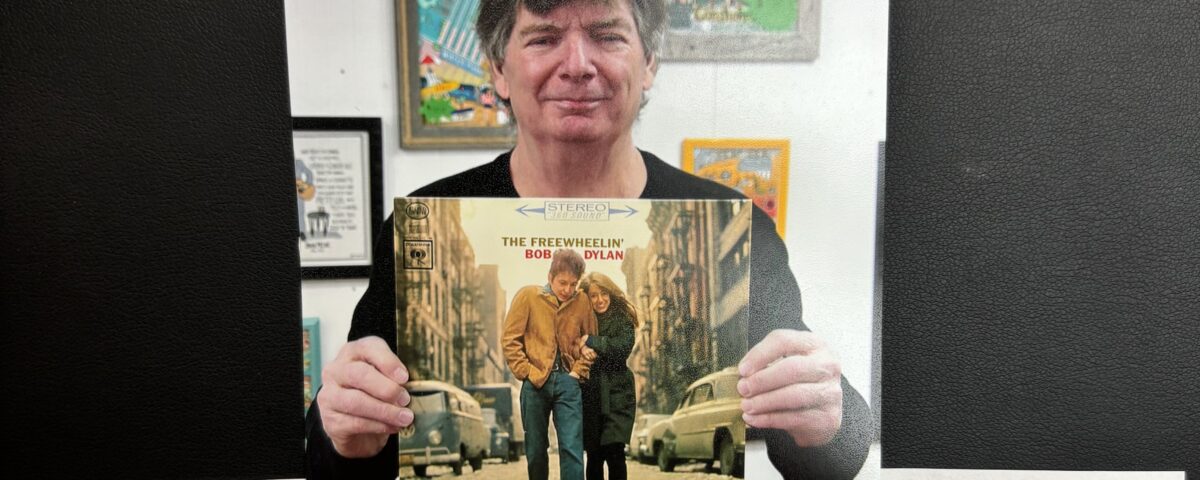
Black History Month
Bob Dylan, Civil Rights and Me
Montgomery, Alabama Road Trip
Walking In The Footsteps of History
Part One
By Jack Coll
2-7-25
I started writing articles in honor of “Black History Month” more than three decades ago in the once popular town newspaper “The Conshohocken Recorder.” I started writing about local “Black Leaders,” in our community including Ned Hector, war hero, Rev. Marshall Lee, founder of St. Paul’s Church, Rev. Marshall Lee’s father the Rev. Abram Lee, a former slave and later a preacher who lived on East Sixth Avenue in Conshohocken and was instrumental in founding the Galilee Baptist Church in Roxborough.
Rev. James Groves, a great supporter of anything to do with Conshohocken and served on many committees, Olive Lee Banks, who broke color barriers throughout Montgomery County, and other black leaders in Conshohocken like Darlene Groves, Gus Morgan, George Bland, Lucius Carter and James “Ike” Griffin, Conshohocken’s first African American President of Town Council among others.
I’ve also written about many national African Americans and national events pertaining to the Civil Rights movement including, Medgar Evers, Emmett Till, Martin Luther King, James Meredith and the Little Rock Nine.
As Donna and I have crisscrossed our way throughout the country on a number of occasions, I never missed an opportunity to visit a historic civil rights monument, museum, and points of interest along with numerous Civil Rights landmarks.
The funny thing about my civil rights interest is I learned more from a Bob Dylan record about Black History, civil rights, social injustice and nuclear disarmament than I ever learned in school. To this day, I’m not sure they teach kids in school about the ignorance of racism and social injustice directed towards African Americans, females, or any other human beings that don’t walk like, or talk like, or don’t act like the way the majority of Americans would like them to.
A movie was released on Christmas Day, 2024, titled “A Complete Unknown.” The movie is a biographical musical drama based on the 2015 book, “Dylan Goes Electric.” The film portrays Bob Dylan through his early folk music success and time spent in Greenwich Village, where he crafted his song writing success.
A number of civil rights and social injustice songs written and performed by Dylan include, “Oxford Town,” and although Dylan never mentions James Meredith by name, its obvious that the song pertains to Meredith and his struggles as the first African American student to be admitted to the segregated University of Mississippi.
“He went down to Oxford Town
Guns and clubs followed him down
All because his face was brown
Better get away from Oxford Town.
Oxford Town around the bend
Come to the door, he couldn’t get in
All because of the color of his skin
What do you think about that, my friend.”
Meredith’s life was threatened, and 31,000 American Servicemen were required to quell the violence.
Then there was Dylan’s, “The Death of Emmett Till.” The death of Emmett Till was a tragic true story of a 15 year old kid from Chicago who was not accustomed to the racial differences between Chicago and Mississippi. Dylan tells the whole story in his 1963 song,
“It was down in Mississippi not so long ago
When a young boy from Chicago town stepped through a southern door
The boys dreadful tragedy I can still remember well
The color of his skin was black, and his name was Emmett Till.”
It’s a sad, sad story. More on Emmitt Till in Part Two of this article.
In 1963 Dylan had been working on a song called “The Times they are a-changin’.” The day after President John F. Kennedy was assassinated, Dylan opened a show in Ohio and played the song for the first time, never has a protest song has so much significance;
“Your old road is rapidly agin’
Please get out of the new if you can’t lend your hand
For the times they are a changin’.”
Keep in mind that Dylan wrote most of these songs when he was 23, 24 and 25 years old. He also wrote about Medgar Evers in the song, “Only A Pawn In Their Game.” A song written by Dylan about the assassination of Civil Rights Activist Evers in Jackson, Mississippi, on June 12, 1963.
Medgar Evers served in the United States Army from 1943-1946, James Meredith served in the United States Air Force from 1951-1960, it makes one wonder what people were thinking.
Dylan’s songs for peace, civil rights, social injustice among other things were endless, songs like “Blowin’ in the Wind,” became a civil rights anthem, “Masters of War,” “Hurricane,” a song about boxer, Rubin “Hurricane” Carter who was charged with a triple homicide in 1966, although Dylan didn’t write the song until 1975, he claimed that racial profiling had everything to do with his arrest despite very week evidence. Two decades later Carter was released from prison thanks in part to Bob Dylan. He wrote “A Hard Rain’s Gonna Fall,” right around the time of the Cuban Missile Crisis, and “Maggie’s Farm,” among many others.
As mentioned at the top of the article Donna and I have traveled the country and spent a lot of time down south. Part of our travels were all about chasing music landmarks and monuments, and part of our travels was to see where landmark civil rights moments happened.
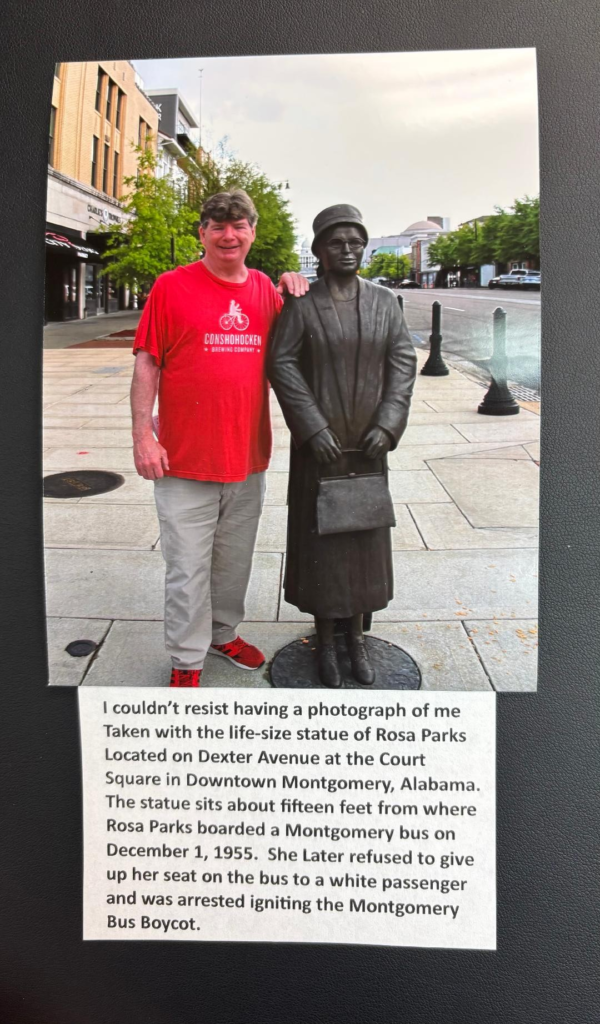
There is a wealth of civil rights history in a small downtown area of Montgomery Alabama, called Court Square, there’s history on every corner, where Moulton and Montgomery Streets meet Dexter Avenue.
I stood on the corner of Court Square and Dexter Avenue in Montgomery, Alabama, where a bronze life-size statue of Rosa Parks stands, about fifteen feet from where she boarded a bus on December 1, 1955. Mrs. Parks refusal to relinquish her seat to a white passenger led to her arrest and eventually led to the Montgomery Bus Boycott that lasted 382 days as 40,000 African Americans stayed off the buses. Rosa Parks was a dedicated Civil Rights pioneer and standing next to the statue, in the spot where she boarded the bus, gave me goosebumps.
The Rosa Parks Museum located just blocks away at 252 Montgomery Avenue, at Troy University has an exact replicate of the bus she was arrested on, a well restored 1955 station wagon, known as the rolling church, used to transport protesters. Mrs. Parks original fingerprints arrest record, court documents and other historically significant arti-facts and documents. While sitting on the bus you can kick-back and enjoy a short documentary film.
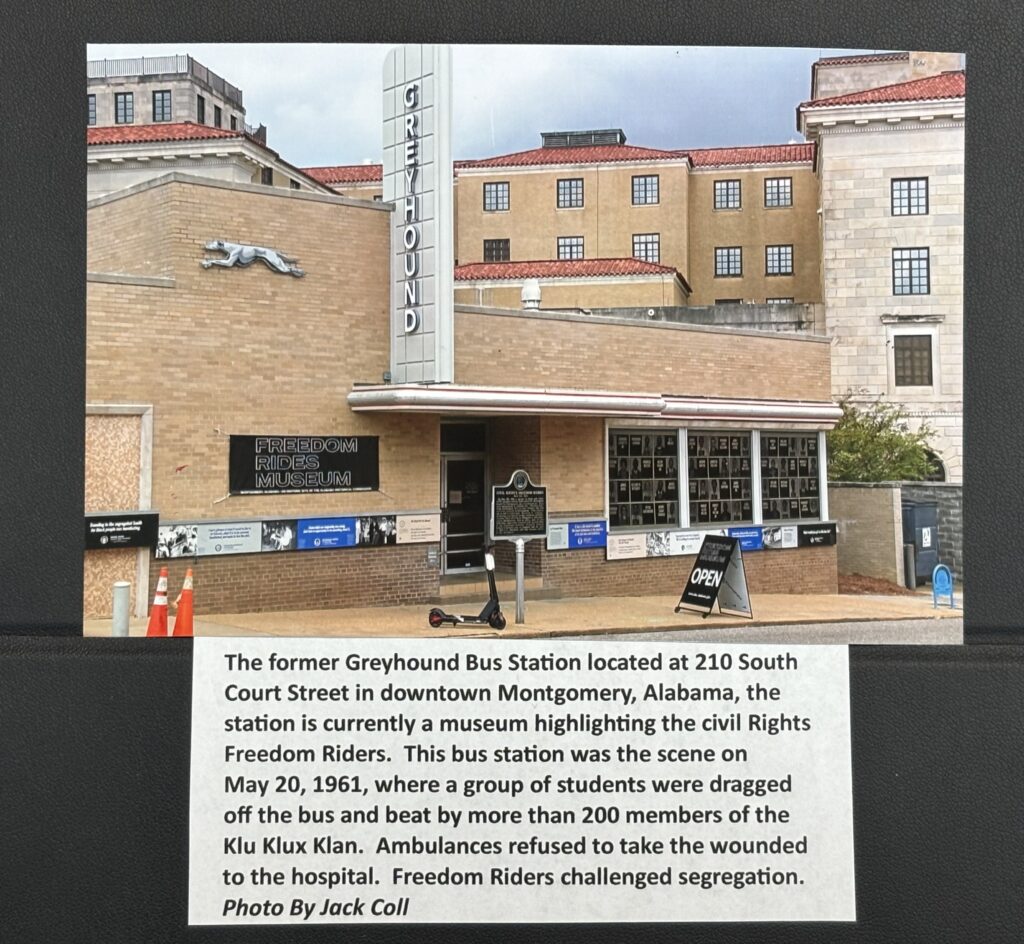
While in Montgomery, Alabama I visited the Greyhound Bus Stop, (A short walk from the Rosa Parks statue) located at 210 South Court Street, now a museum for the Civil Rights Freedom Riders. I remember walking through the museum and thinking this was such an important part of the civil rights movement and wondered, of all the high schools in this country, and all the graduates of these high schools, did any of them ever study or even heard of the “Civil Rights Freedom Riders?”
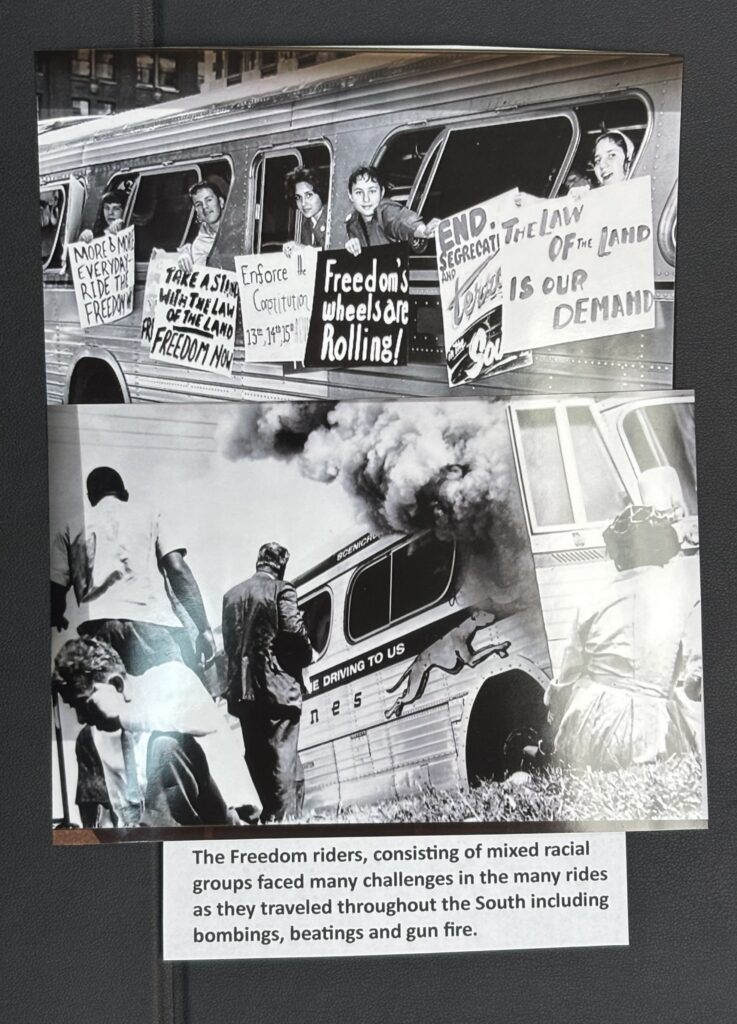
The Montgomery Greyhound Bus Station was in operation as a bus station until 1995 and later became a museum for the Freedom riders. The bus station was the site of a violent attack on participants in the 1961 Freedom Ride during the Civil Rights Movement.
On May 20, 1961, a group of black and white SNCC members, (Student Nonviolent Coordinating Committee) were led by John Lewis, the bus they were riding left Birmingham and was bound for Montgomery on a Greyhound bus. They were determined to continue the “Freedom Ride” from Washington, D. C. to New Orleans that had met with violence in Birmingham. Their purpose was to test a court case, “Boynton vs. Virginia,” declaring segregation in bus terminals unconstitutional. Upon arriving in Montgomery, their police escort disappeared, and an angry mob of over 200 Klan supporters attacked and severally injured them at the Greyhound terminal. Attorney General Robert F. Kennedy was so enraged that he sent in 450 United States Marshalls, it also enraged President John F. Kennedy and his administration became active in the movement.
The Greyhound Station, now a museum is a treasurer trove of information and history, a place where lessons can still be learned.
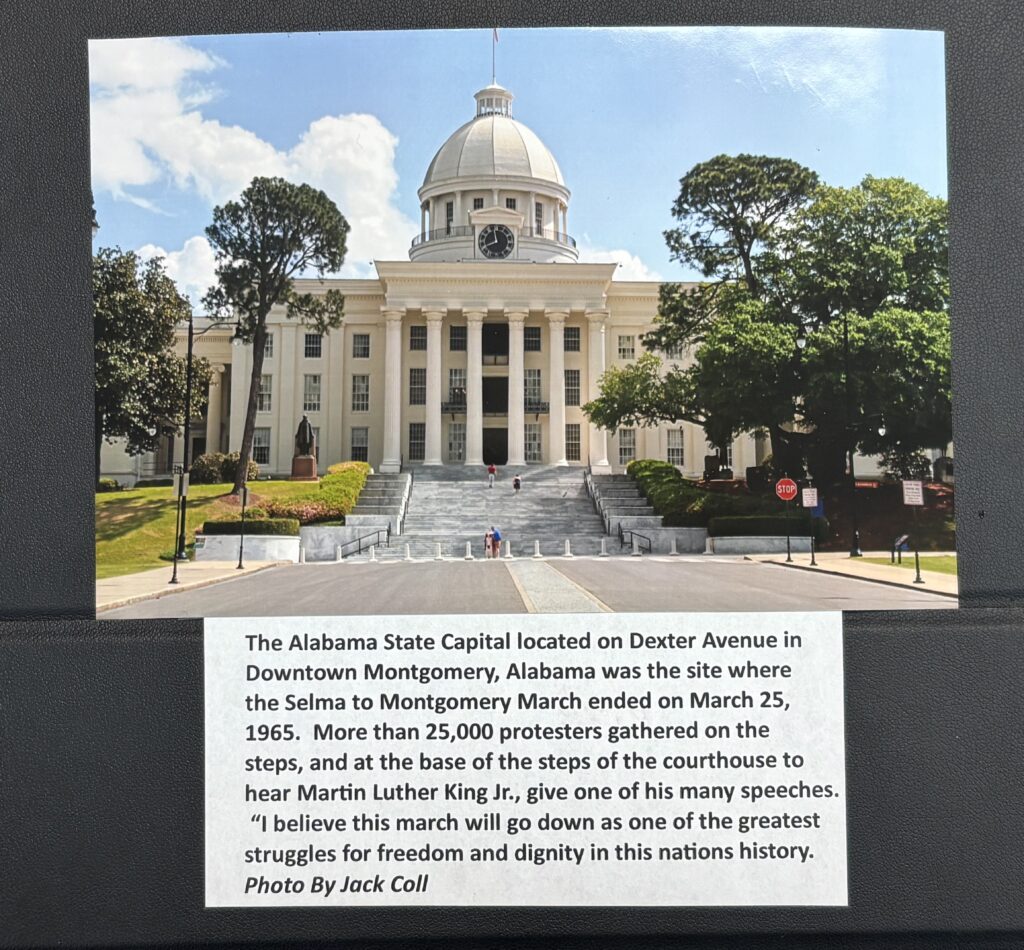
Another short distance walk at the end of Dexter Avenue, is the Alabama State Capital, it was here that the third Selma to Montgomery March ended on March 25, 1965, with 25,000 protestors at the front of the capitol steps. Prominent protesters included Martin Luther King Jr., Ralph Abernathy, Coretta Scott King, Ralph Bunche, (Bunche was a Harvard Grad, who was awarded the 1950, Nobel Peace Prize, the first African American to be awarded the honor. In 1963 he was awarded the Presidential Medal of Freedom by President John F. Kennedy) Harry Belafonte and Joan Baez were among a number of other civil rights leaders at the Alabama State Capital.
Governor George Wallace would not see or speak to the protesters, the delegation left without giving their petition to anyone, it read in part; “We have come not only five days and fifty miles, but we have come from three centuries of suffering and hardship. We have come to you, the Governor of Alabama, to declare that we must have our freedom now, We must have the right to vote; we must have equal protection of the law and to police brutality.” (Part of the Selma to Montgomery Marchers petition)
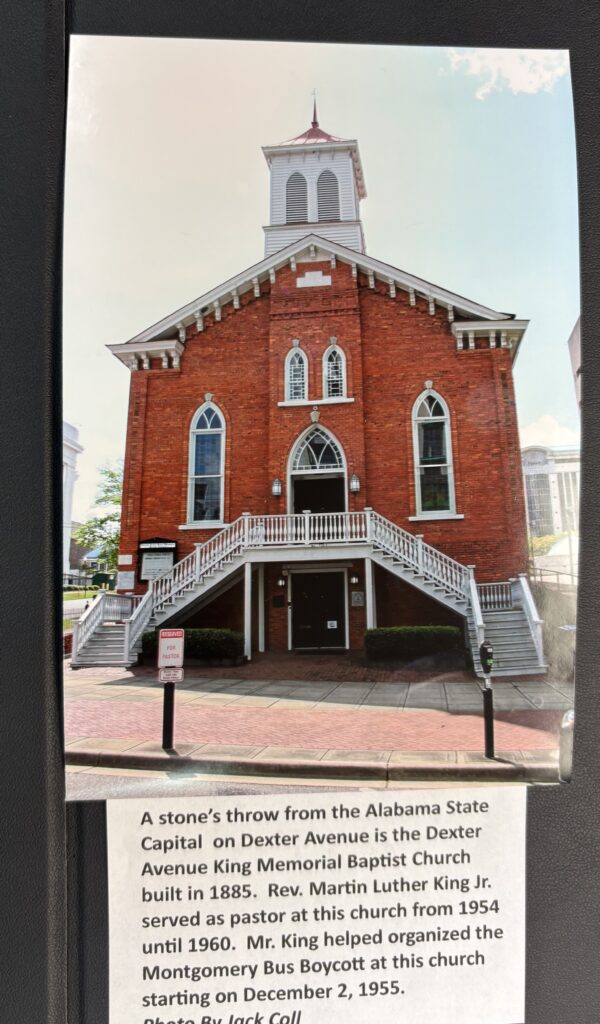
Just a half a block from the Alabama State capitol is the Dexter Avenue Baptist Church. The church was designated as a National Historic Landmark in 1974, because of its importance in the Civil Rights Movement. In 1978 the name of the church changed to the Dexter Avenue King Memorial Baptist Church in memory of Martin Luther King Jr. who was a pastor there and helped organize the Montgomery Bus Boycott in 1955 during the civil rights era. King was pastor from 1954 until 1960.

There was a number of other memorable civil rights stops along the Dexter Avenue strip and surrounding area. A big Thanks goes out to the staff at the Montgomery Visitors Center located at one Court Square, right in the center of the above mentioned civil Rights landmarks.
In the end, I would never have been interested in Civil rights history, nor would I have known anything about civil rights if not for bob Dylan’s records. I purchased my first Bob Dylan album in the summer of 1964, after landing a job as a paper boy in Hughes Park, Upper Merion Township. I purchased “The Freewheelin Bob Dylan” from the Grants store in the Valley Forge Shopping Center.
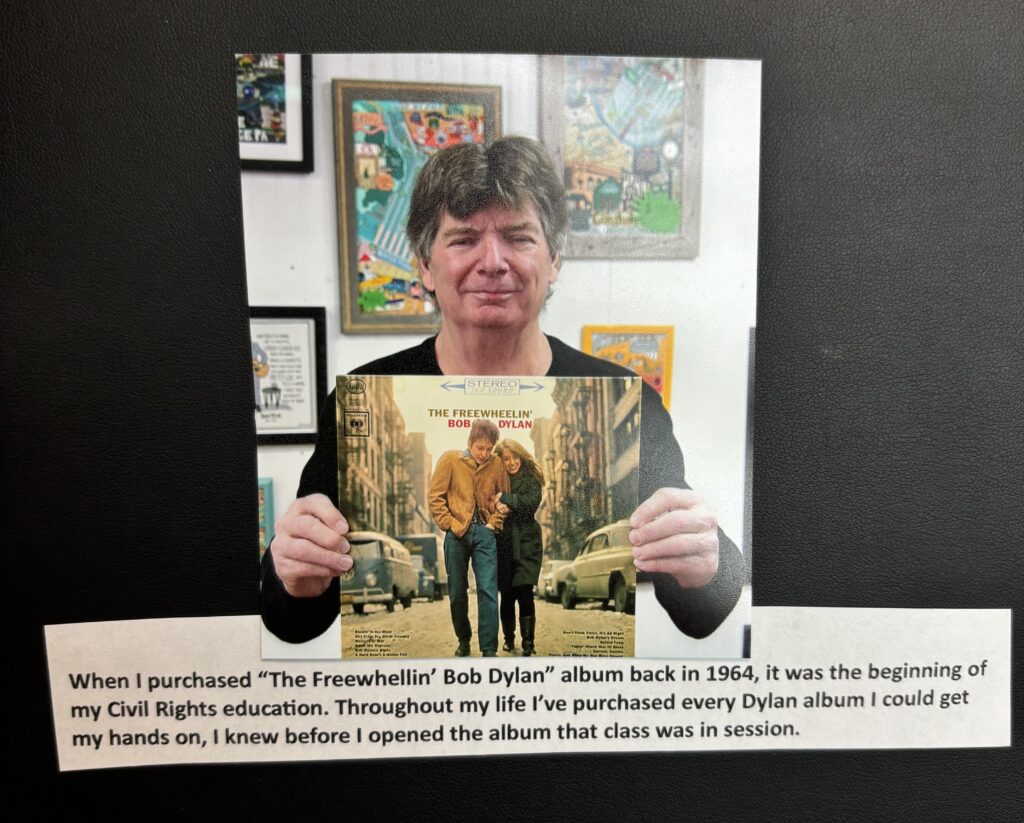
The songs that grabbed me on that album included “Blowin’ In The Wind,” “Girl From The North Country,” “Masters Of War,” “A Hard Rains Gonna Fall,” “Don’t Think Twice,” and “Oxford Town.”
Stay tuned for Part Two of “ Bob Dylan, Civil rights and Me”
